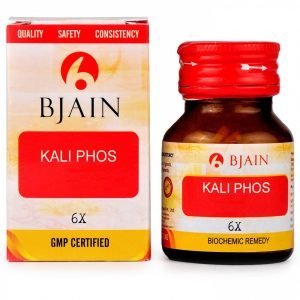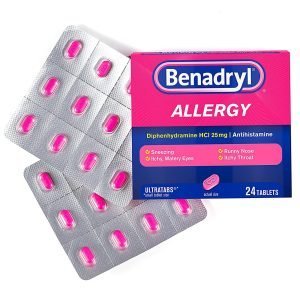Gabapentin, also known as an antiepileptic or anticonvulsant drug has variously used in the medical field. As with most drugs, you must consult with your doctor first before buying this drug over the counter. Also, you can read the medication leaflet provided by your pharmacist before you start taking this drug. Not everyone has the same dose of this medicine because doses vary based on one’s condition and how he or she is responding to treatment. Follow your doctor’s instructions and do not increase your dose when you are feeling unwell, without asking your doctor first. Some of the uses of gabapentin include the following;
1. Treat nerve pain in adults
Patients suffering from diabetes are at a higher risk of suffering from nerve pain. Gabapentin is used in treating nerve pain in adults, which is related to diabetes and lumbar spine disc disease.
2. Treat herpes virus
The post-herpetic neuralgia, also known as the PHN, is an effect of herpes that adversely and seriously affects the quality of life. Adults who are 50 years and above are likely to complain from moderate to severe herpes pain. Using gabapentin in lower doses in the treatment of the herpes virus seems to be effective also in the prevention of the PHN.
3. Pain reliever
Gabapentin is a strong drug that helps in the treatment of nerve pain. Nerve pain cannot be relieved by normal painkillers, but when gabapentin is combined with other painkillers, it can help in relieving pain.
4. Treating seizures
Gabapentin is used in the treatment of partial seizures in adults. This medication is taken together with other seizure medication to treat epilepsy in adults and children who are three years and older.
5. Combination therapy
Gabapentin is used as a combination therapy. This is to say that it is used together with other medications in treating various medical conditions.
6. Reducing anxiety

Gabapentin is used in treating anxiety that occurs in bipolar disorder patients. However, it is not used in the treatment of specific symptoms of these disorders. It is used in reducing anxiety in patients because it is believed that the drug has some anxiety-reducing properties.
7. Treating alcohol use disorder
Alcohol withdrawal happens when you depend on consuming alcohol regularly, then you abruptly stop taking alcohol. Withdrawal symptoms are very painful, and mot varies from vomiting to hallucinations. Gabapentin is helpful in the treatment of alcohol use disorder. Taking gabapentin helps in alleviating withdrawal symptoms. Research has it that using gabapentin is effective only for patients who have had extreme withdrawal symptoms.
8. Reducing pain after surgery
Before surgery, you can take gabapentin to help in reducing pain after surgery. Research studies have shown that taking 600 mg of gabapentin, two hours before surgery can help lessen pain after surgery. This is specifically for major spine surgery.
9. Cannabis withdrawal
There are various forms of addiction that different people deal with every day. Just as withdrawing from alcohol is difficult, withdrawing from cannabis is also difficult. Your cannabis withdrawal symptoms start to disappear as early as three weeks of taking the gabapentin medication. Abruptly stopping the use of cannabis also has various withdrawal symptoms such as difficulty in breathing, sweat, and mood swings.
10. Social phobia
Some people have a persistent fear of socializing or performing in public places. This can be humiliating and can also lower one’s self-esteem. Since gabapentin has proved effective in the treatment of anxiety, it is also useful in treating patients with social phobia.
11. Nighttime hot flashes from menopause
Menopause is the period when women are no longer as fertile as they used to be, and almost all of them cannot bear children. Gabapentin is used to help women who are going through menopause and are constantly experiencing hot flashes at night. The required quantity of the dose is 300 mg of gabapentin, preferably at night. You should not exceed this dose at any point unless it is not working for you, and your doctor has recommended that you increase the dosage.
12. Reduce chronic vaginal or pelvic pain.
Pelvic pain syndrome causes chronic and tender pain in the pelvis muscles. Taking gabapentin before bedtime, or three times a day helps in the reduction of moderate to severe vaginal or pelvic pain.
13. Restless leg syndrome
The restless leg syndrome is a condition that is characterized by an irresistible urge to move the legs. This condition occurs in up to 10% of the United States population. Many people with leg syndrome experience the urge to move their legs every 15 to 40 seconds during sleep. This disrupts an individual’s sleeping pattern. Research studies have shown that taking gabapentin helps in reducing the number of times the movements interrupt sleep.
14. Headache after a concussion

Most physically active people, who engage in sports are likely to experience sports-related concussions. A recent study has shown that taking gabapentin a few hours, preferably within the first two days after a concussion, helps in reducing short-term headaches.
15. Treating itched skin
Treating chronic itchy skin is very difficult, especially if over-the-counter medications are being used. This is because most over-the-counter medications are ineffective. In addition to that, other patients do not respond to traditional methods of treatment. Gabapentin is used as a promising alternative, especially for those patients who do not react well to traditional methods of treatment. Daily doses of this drug help in improving itchy skin within one month.
16. Used in Pets
Gabapentin is also prescribed by veterinarians to treat chronic pain in cats, dogs, and other animals. However, this drug should be prescribed in lower doses, especially when using it in pets. This is the main reason why gabapentin is most effective when combined with other analgesic agents such as NSAIDs.
17. Treating persistent pain
Gabapentin is the best medication for treating persistent pain such as stabbing, shooting, and burning pain.




